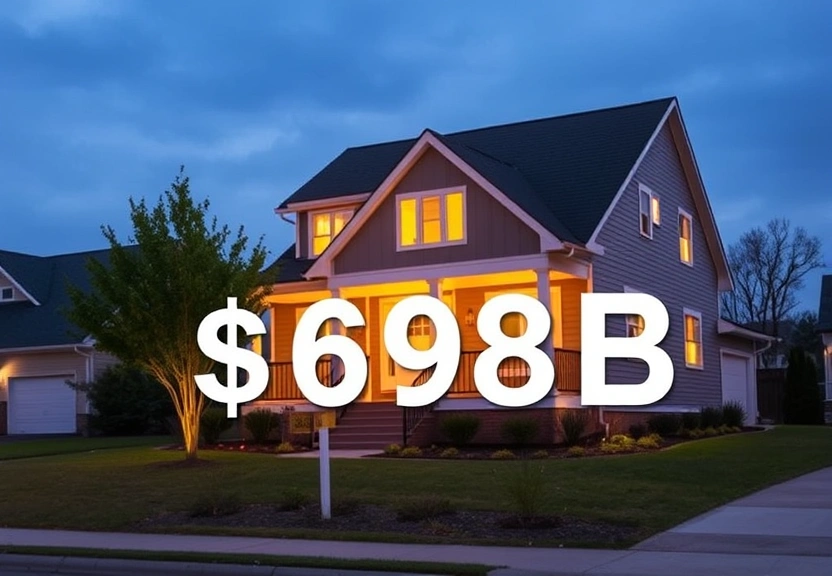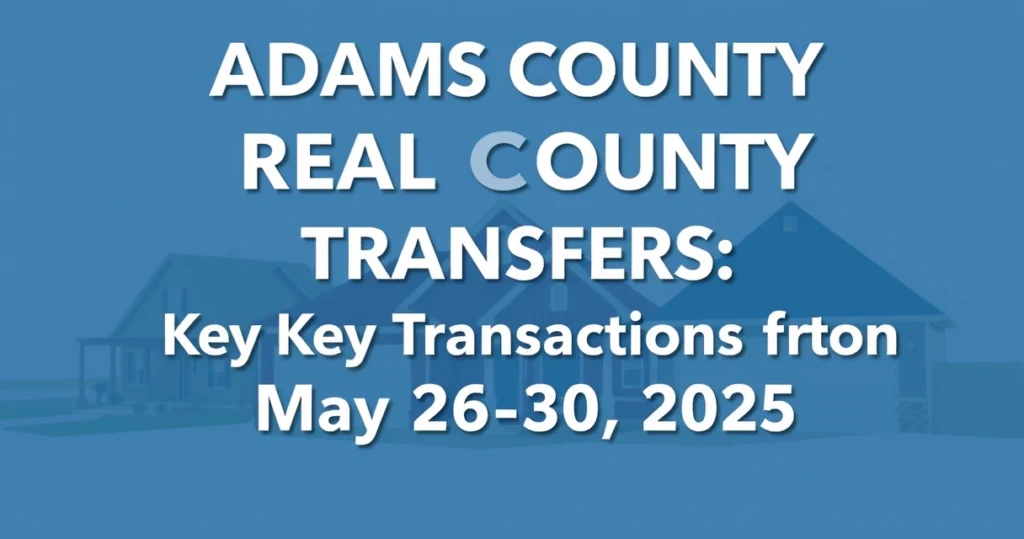Home Sellers Confront Tough New Market as Listings Soar to $698B
The U.S. housing market has been experiencing significant changes, and recent data reveals a growing gap between home sellers and buyers as inventory levels reach their highest point in five years, amounting to an astounding $698 billion. This shift signals a new era for real estate, where sellers must adapt to evolving market dynamics. As the number of available listings increases, sellers face unique challenges that could impact their selling strategies and overall profitability.

As we delve into the current state of the housing market, we will explore the implications of soaring inventory levels, the widening buyer-seller gap, and emerging real estate trends. Understanding these factors is crucial for sellers who want to navigate this fluctuating landscape successfully.
Understanding the Current Housing Market Dynamics
The housing market has long been characterized by varying levels of demand and supply. However, recent trends have shown that inventory levels are on the rise, leading to a significant shift in market dynamics. As more listings flood the market, sellers are beginning to feel the pressure of increased competition, which can lead to more challenging selling conditions.
Rising Inventory Levels
According to recent reports, the inventory of homes for sale in the U.S. has reached its highest level since 2018. This increase can be attributed to various factors, including a surge in new construction, homeowners opting to sell, and a slowdown in buyer activity due to rising interest rates and economic uncertainties. With more homes available for purchase, sellers must reassess their strategies to attract potential buyers.
The Buyer-Seller Gap
The widening gap between buyers and sellers is becoming increasingly evident. On one hand, sellers are often holding out for higher prices based on previous market conditions, while buyers are becoming more cautious as they face rising mortgage rates and potential economic downturns. This disconnect creates a challenging environment for sellers who may struggle to find interested buyers willing to meet their asking prices.
Implications for Home Sellers
As sellers confront this new market reality, several key implications arise that can affect their selling strategies. Understanding these implications is essential for optimizing the selling process and achieving favorable outcomes.
Pricing Strategies
With the increase in inventory, pricing strategies become more crucial than ever. Many sellers may be tempted to price their homes aggressively based on previous high market values. However, it is essential to conduct thorough market research and consider recent sales data to set a competitive yet realistic price. Overpricing can lead to extended days on the market, which can ultimately deter potential buyers.
Home Preparation and Presentation
In a saturated market, the presentation of a home becomes paramount. Sellers should invest time and resources into preparing their homes for sale, ensuring that they stand out among the competition. This may include minor repairs, staging, and professional photography to create an appealing online listing. First impressions are crucial, and a well-presented home can attract more potential buyers.
Flexible Negotiation Tactics
In a market where buyers have more options, sellers may need to adopt more flexible negotiation tactics. This could involve being open to price negotiations, including incentives such as covering closing costs, or being willing to make minor concessions to close the deal. A willingness to accommodate buyers’ needs can facilitate a smoother transaction process and increase the likelihood of selling.
Emerging Real Estate Trends
As the housing market continues to evolve, several emerging trends warrant attention from home sellers. Staying informed about these trends can provide sellers with a competitive edge and help them navigate the complexities of the current market.
The Rise of Remote Work and Its Impact on Demand
The COVID-19 pandemic has fundamentally altered how people work, leading to a rise in remote work opportunities. This shift has impacted housing preferences, with many buyers seeking homes in suburban or rural areas rather than urban centers. Sellers should consider these changing preferences when marketing their properties, highlighting features that appeal to remote workers, such as home office spaces and proximity to outdoor amenities.
Technological Advancements in Real Estate
Technology is playing an increasingly prominent role in the real estate market. Virtual tours, online listings, and digital marketing strategies are becoming essential components of an effective selling plan. Sellers should leverage technology to enhance visibility and reach a larger audience. Collaborating with real estate agents who utilize innovative marketing techniques can significantly improve the chances of a successful sale.
Environmental Considerations
Homebuyers are becoming more environmentally conscious, leading to a growing demand for energy-efficient and sustainable homes. Sellers can capitalize on this trend by showcasing eco-friendly features, such as solar panels, energy-efficient appliances, and sustainable materials. Highlighting these attributes can attract environmentally-minded buyers and potentially command higher sale prices.
Important Points for Home Sellers
- Research current market conditions and set competitive prices.
- Invest in home preparation and presentation to stand out.
- Be flexible in negotiations to accommodate buyers’ needs.
- Leverage technology for online visibility and marketing.
- Highlight eco-friendly features to attract sustainability-focused buyers.
Frequently Asked Questions (FAQ)
1. What should I do if my home isn’t selling in this market?
If your home isn’t selling, consider reevaluating your pricing strategy, enhancing your home’s presentation, and working with a knowledgeable real estate agent who can provide insights into market trends and buyer preferences.
2. How can I determine the right asking price for my home?
Research comparable properties in your area that have recently sold, analyze current listings, and consider market conditions. Consulting with a real estate agent can also provide valuable guidance in setting a competitive price.
3. Should I make repairs before listing my home?
Yes, making necessary repairs can improve your home’s appeal and potentially increase its value. Focus on addressing any major issues and enhancing curb appeal to attract buyers.
4. What are the advantages of staging my home?
Staging can help potential buyers visualize the space and its potential, making it more appealing. It can also lead to faster sales and higher offers, as well-presented homes often stand out in a competitive market.
5. How long does it typically take to sell a home in the current market?
The time it takes to sell a home can vary based on location, pricing, and market conditions. However, with rising inventory levels, homes may take longer to sell compared to previous years. Staying informed about local market trends can provide a better estimate.
Conclusion
The current housing market presents unique challenges for home sellers as inventory levels soar to $698 billion and a growing gap emerges between buyers and sellers. To navigate this evolving landscape, sellers must adapt their strategies, focusing on realistic pricing, effective home presentation, and flexible negotiation tactics. By staying informed about emerging real estate trends and leveraging technology, sellers can enhance their chances of achieving successful transactions in this increasingly competitive market. Understanding and responding to the changing dynamics will be key to thriving as a home seller in today’s real estate environment.
📰 Original Source
Este artigo foi baseado em informações de: https://www.foxbusiness.com/real-estate/home-sellers-face-harsh-new-reality-listings-hit-record-698b-value


